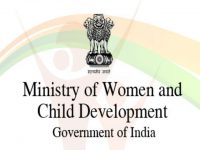
Health Minister, Shri J P Nadda has informed that the Registrar General of India, Sample Registration System (RGI-SRS) provides a nationwide disaggregated data on the different causes of maternal and infant mortality at different intervals.
The major causes of maternal deaths as per RGI-SRS(2001-03) are :
- Haemorrhage: 38% occur mainly because of postpartum Haemorrhage.
- Sepsis: 11%, because of any infection during pregnancy, labor and in postpartum period.
- Abortion: 8%, because of unsafe abortions.
- Hypertensive disorders: 5%, because of High Blood pressure during pregnancy.
- Obstructed labor :5%
- Other causes: 34%- includes anaemia and various other causes.
The major causes of Infant mortality as per RGI-SRS (2010-13), are: Prematurity & low birth weight (35.9%), Pneumonia (16.9%), Birth asphyxia & birth trauma (9.9%), other non-communicable diseases (7.9%), diarrhoeal diseases (6.7%), ill-defined (4.6%), congenital anomalies (4.6%), infections (4.2%), injuries (2.1%), fever of unknown origin (1.7%), other causes (5.4%).
Data on Maternal Mortality rate is not being captured under NFHS-4. However the data on infant mortality rate and Child mortality rate is captured in NFHS-4. The report of the NFHS-4 is available for 15 States/UTs currently.
The comparison of Infant Mortality Rate and Child Mortality rate and the point decline between two surveys as recorded in 15 States /UTs is provided in the table below. All the States/UTs, except Tripura have shown a decline in IMR between NFHS-3 and NFHS-4.
Comparison of NFHS-4 and NFHS-3 data for IMR and U5MR
| Infant mortality rate (IMR) | Under-five mortality rate (U5MR) | |||||
| NFHS-4 | NFHS-3 | Points Decline (NFHS-3 and 4) | NFHS-4 | NFHS-3 | Points Decline (NFHS-3 and 4) | |
| Bihar | 48 | 61 | 13 | 58 | 84 | 26 |
| Goa | 13 | 15 | 2 | 13 | 20 | 7 |
| Haryana | 33 | 41 | 8 | 41 | 52 | 11 |
| Karnataka | 28 | 43 | 15 | 32 | 54 | 22 |
| Meghalaya | 30 | 44 | 14 | 40 | 70 | 30 |
| Madhya Pradesh | 51 | 69 | 18 | 65 | 93 | 28 |
| Sikkim | 29 | 34 | 5 | 32 | 40 | 8 |
| Tamil Nadu | 21 | 30 | 9 | 27 | 35 | 8 |
| Tripura | 31 | 27 | -4 | 36 | 33 | -3 |
| Uttarakhand | 40 | 42 | 2 | 47 | 56 | 9 |
| West Bengal | 27 | 48 | 21 | 32 | 59 | 27 |
| Andhra Pradesh* | 35 | 54 | 19 | 41 | 63 | 22 |
| Telangana* | 28 | 54 | 26 | 32 | 63 | 31 |
| Puducherry | 16 | NA | – | 16 | NA | – |
| Andaman & Nicobar Islands | 16 | NA | – | 22 | NA | – |
*The NFHS-3 data is for the undivided State of Andhra Pradesh
All the three states namely Bihar, M.P. and Meghalaya have shown a decline of 13, 18 and 14 points respectively in Infant mortality rate.
The details of the steps taken to reduce MMR and IMR are given below.
Under National Health Mission, the key steps taken by Government of India to address the issue of maternal deaths and to accelerate the pace of reduction of MMR across all states are as below:
- Promotion of institutional deliveries through Janani Suraksha Yojana (JSY).
- Janani Shishu Suraksha Karyakaram (JSSK) entitles all pregnant women delivering in public health institutions to absolutely free and no expense delivery, including caesarean section. Similar entitlements have been put in place for all sick infants accessing public health institutions for treatment.
- Operationalization of Sub-Centers, Primary Health Centers, Community Health Centers and District Hospitals for providing 24×7 basic and comprehensive obstetric care, neonatal, infant and child care services.
- Mother and Child Protection Card in collaboration with the Ministry of Women and Child Development to monitor service delivery for mothers and children.
- Mother and Child Tracking System is being implemented to ensure antenatal, intranatal and postnatal care along-with immunization services.
- Identifying the severely anaemic cases of pregnant women at sub centres and PHCs for their timely management
- Operationalization of Safe Abortion Services and Reproductive Tract Infections and Sexually Transmitted Infections (RTI/STI) at health facilities with a focus on “Delivery Points”.
- Maternal Death Review (MDR) is being implemented across the country both at facilities and in the community. The purpose is to take corrective action at appropriate levels and improve the quality of obstetric care.
- Establishing Maternal and Child Health (MCH) Wings at high caseload facilities to improve the quality of care provided to mothers and children.
- Under National Iron Plus Initiative (NIPI), through life cycle approach, age and dose specific IFA supplementation programme is being implemented.
- To tackle the problem of anaemia due to malaria particularly in pregnant women and children, Long Lasting Insecticide Nets (LLINs) and Insecticide Treated Bed Nets (ITBNs) are being distributed in endemic areas.
- Capacity building of health care providers in basic and comprehensive obstetric care, Integrated Management of Neo-natal and Childhood Illness (IMNCI), Navjaat Shishu Suraksha Karyakaram (NSSK), Facility Based Newborn Care (FBNC) and Infant and Young Child Feeding practices (IYCF) etc.
- Setting up of Skill Labs with earmarked skill stations for different training programs to enhance the quality of training in the states.
- A new initiative of “Prevention of Post-Partum Hemorrhage (PPH) through Community based advance distribution of Misoprostol” by ASHAs/ANMs for high home delivery districts.
- Emphasis on facility based newborn care i.e. Special New Born Care Units (SNCUs), New-born Stabilization Units (NBSUs) and Newborn Care Corners (NBCCs) at different levels to reduce child morbidity and mortality:
- Launch of India Newborn Action Plan (INAP) with an aim to reduce neonatal mortality and stillbirths to single digit by 2030.
- Newer interventions to reduce new-born mortality- Vitamin K injection at birth, Antenatal corticosteroids for preterm labour, kangaroo mother care and injection gentamicin to young infants in cases of suspected sepsis.
- Newer interventions to reduce maternal mortality and morbidity- Diagnosis & management of Gestational Diabetes Mellitus, Hypothyroidism during pregnancy, Training of General Surgeons for performing Caesarean Section, Calcium supplementation during pregnancy and lactation, De-worming during pregnancy, Maternal Near Miss Review, Screening for Syphilis during pregnancy and Dakshata guidelines for strengthening intra-partum care
- Home based newborn care through ASHAs to improve new born practices at the community level and early detection and referral of sick new born babies.
- Intensified Diarrhoea Control Fortnight (IDCF) to be observed in July-August 2015 focusing on ORS and Zinc distribution for management of diarrhoea and feeding practices.
- Integrated Action Plan for Pneumonia and Diarrhoea (IAPPD) launched in four states with highest infant mortality (UP, MP, Bihar and Rajasthan).
- Nutritional Rehabilitation Centres (NRCs) have been established for management of severe acute malnutrition in children.
- Appropriate Infant and Young Child Feeding practices are being promoted in convergence with Ministry of Woman and Child Development.
- Village Health and Nutrition Days in rural areas as an outreach activity, for provision of maternal and child health services.
- Universal Immunization Programme (UIP): Vaccination protects children against seven vaccine preventable diseases.
- Mission Indradhanush has been launched in 201 high focus districts to fully immunise more than 89 lakh children who are either unvaccinated or partially vaccinated; those that have not been covered during the rounds of routine immunisation for various reasons.
- Rashtriya Bal Swasthya Karyakram (RBSK) for health screening and early intervention services has been launched to provide comprehensive care to all the children in the age group of 0-18 years in the community.







Leave a Reply
You must be logged in to post a comment.